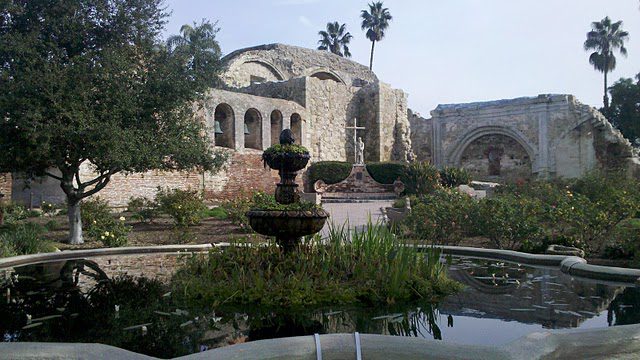THE OLDEST MISSION IN CALIFORNIA
By Christine Lampert, Architect, AIA, NCARB | Photo by Jackie Brown
C
ompared to Europe and even the East Coast of the United States, California has very little architecture that is considered old. We tend to designate buildings from the early 1900s as historic. However, the oldest historic structure still standing in California is actually nearby in San Juan Capistrano.
The Franciscan missionaries arrived from Spain with the goals of expanding Spanish European territory and to teaching Catholicism to the natives. They built their missions between 1769 and 1823. The native Americans who had been here for thousands of years were recruited as mostly unwilling workers for the missionaries. They built the missions and they farmed the land.
Mission San Juan Capistrano was founded in 1776. It would have been established in 1775, but construction was halted for a year because the indigenous people of the area had attacked the mission site. Once the work on the new mission began, the Franciscan missionary Junipero Serra celebrated the first mass on November 1, 1776.
The church they built was constructed of stone rather than adobe bricks. This “Great Stone Church” lasted until 1812, when it was destroyed by an earthquake. Many people died that day when the earthquake struck.
The ruins of the old church still stand in memory of that day, but a new church, Mission Basilica San Juan Capistrano, was built on the far northwest corner of the mission grounds. It was completed in 1986. The church was designed in the classical Greco-Roman style and is often dubbed “The American Acropolis” by architects. The influence of the Byzantine cathedrals found in Europe is very clear.
Today, families can attend mass and have weddings and baptisms in the new church, which is a replica of the original church, though this one was designed and built to the latest codes and is earthquake resistant.
Since the destruction of the original church, the oldest building still in use in California is the Serra Chapel. It was built in 1782 and is the only original building to remain intact. Father Junipero Serra celebrated mass in this building. The sanctuary of this chapel was enlarged in 1922, but the main structure remains and is used today for services.
In 1818, the mission was attacked by French pirates who set fire to buildings and stole all the ammunition, supplies and valuables.
Ultimately, the mission complex was self-sustaining. Many converted Catholics among the indigenous people lived, worshiped and worked at the mission. They planted gardens for their food known as “huertas” and they had an olive mill and metal forging furnaces that can still be seen.
The missions began to decline when Mexico gained independence from Spain in 1821. By 1840, the mission was abandoned and a local ranch owner took over ownership. In 1865, President Lincoln signed a proclamation restoring the Roman Catholic Church as the owner of the mission and restoration work began.
Mission San Juan Capistrano, considered the Birthplace of Orange County, has a popular museum and is recognized as a World Heritage Site by United Nations Educational, Scientific and Cultural Organization (UNESCO).

Christine Lampert of Lampert Dias Architects is a member of the American Institute of Architects and is certified with the National Council of Architectural Registration Boards. She has lived in San Clemente for more than 45 years, and used to reside part time in Hong Kong.
Christine Lampert, Architect, AIA, NCARB
